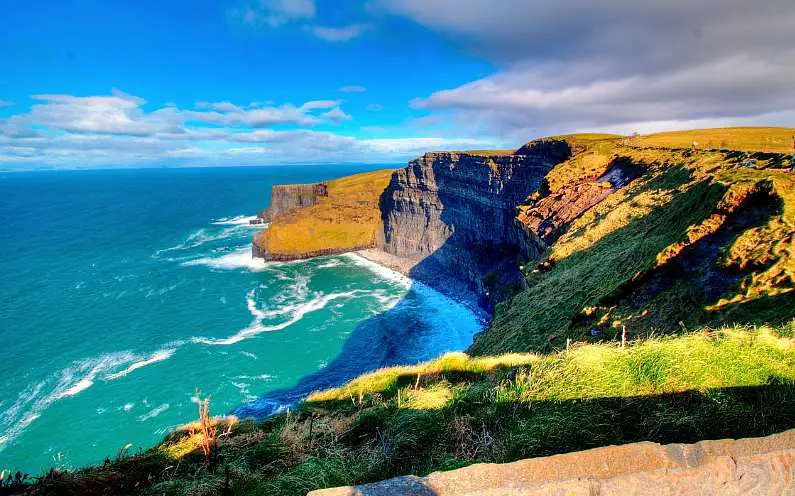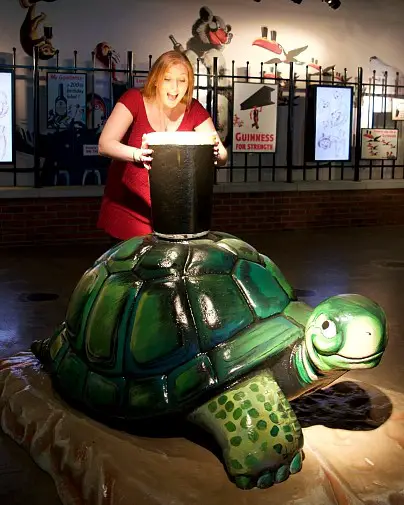Top 10 facts about the Cliffs of Moher (that are frickin’ awesome!)
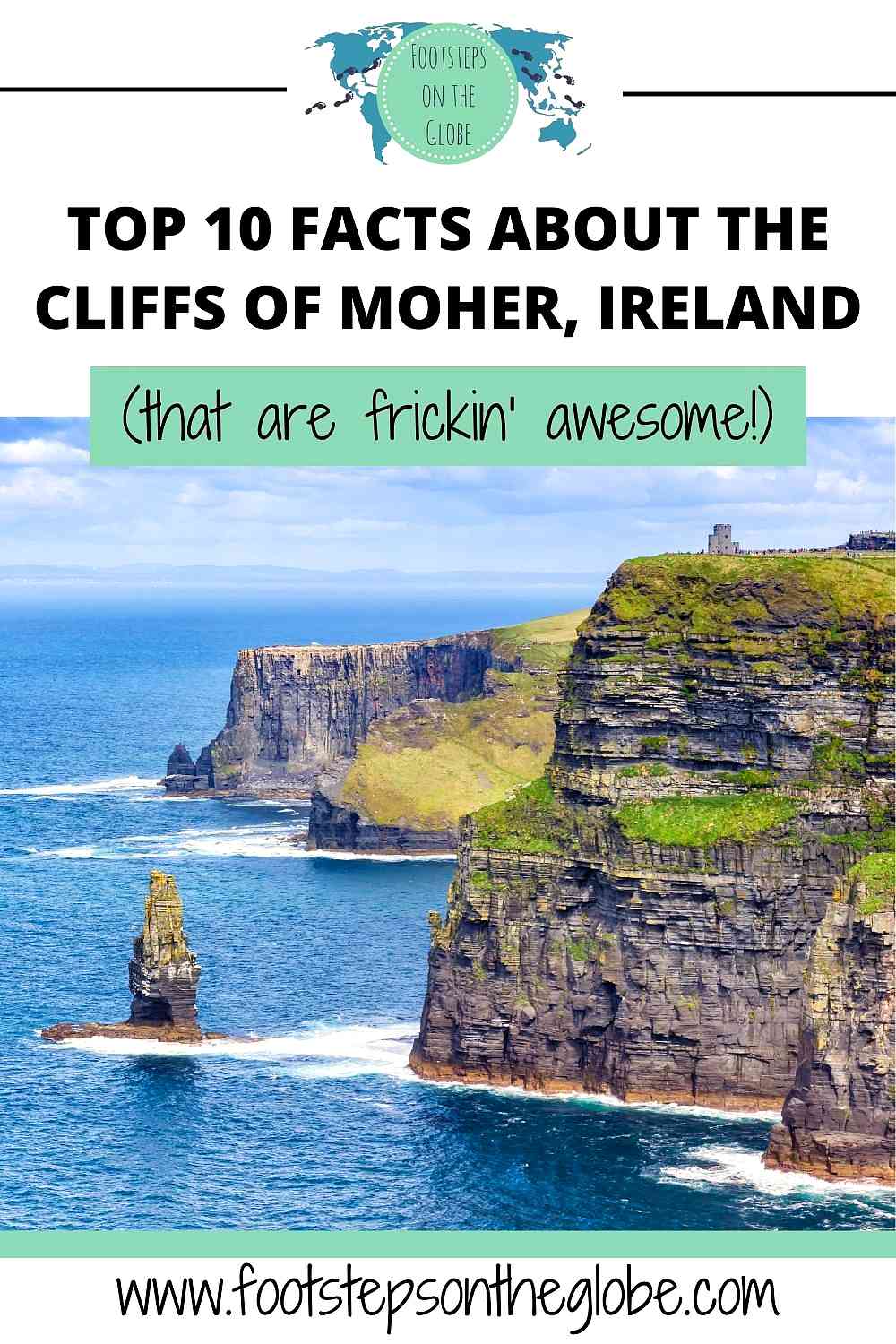
Top 10 facts about the Cliffs of Moher (that are frickin’ awesome!)
The Cliffs of Moher are one of my favourite places to visit in The Republic of Ireland! Their raw beauty is awe-inspiring and are a totally unmissable stop when visiting Dublin! Want to know more about this incredible natural wonder? Here are the top 10 facts about the Cliffs of Moher (that are frickin’ awesome!).
If you’d like to visit the Cliffs of Moher, check out a day tour from Dublin.
OTHER IRISH POSTS YOU MAY LIKE…
- Complete Guide to the Guinness Storehouse Dublin (plus, top tips!)
- Top 10 things to do in Belfast (as recommended by a local!)
- Find the most iconic Game of Thrones locations in Northern Ireland!
- How to get from Belfast to the Giant’s Causeway (by car, train, bus and tour!)
- How to get from Dublin to Cliffs of Moher (by car, train, bus and tour)
1) The Cliffs of Moher are 319 million years old!
Incredibly, the Cliffs of Moher were created during the Upper Carboniferous period, approximately 319 million years ago!
They were formed through a combination of geological processes, including sedimentation and volcanic activity. All whilst dinosaurs roamed the Earth!
If you’d like to visit the Cliffs of Moher, I recommend going on a Dublin to Cliffs of Moher Day Tour Trip. You’ll get to know more about Ireland’s rich heritage on a scenic drive to the Galway coast, stopping en route for photo opportunities in Kinvara fishing village and Bunratty Castle!
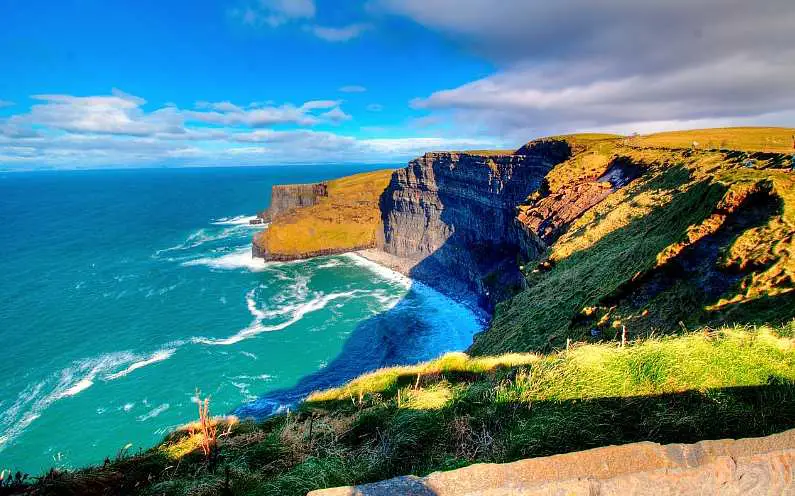
2) The layered rock that make up the Cliffs of Moher reflect environmental changes over million of years
The rock layers seen in the Cliffs of Moher are as result of the deposit of sediment in different environmental conditions over millions of years. This is why the cliffs appear to have different gradients of colour from their base up to the cliff edge.
The foot of the cliffs are made of the oldest rocks and get younger as they build towards the top. The lower layers are typically made up of shale, which is a fine-grained sedimentary rock formed from the compaction of mud and clay.
Above the shale layers, you can find sandstone layers, a coarser-grained rock formed from the consolidation of sand-sized grains.
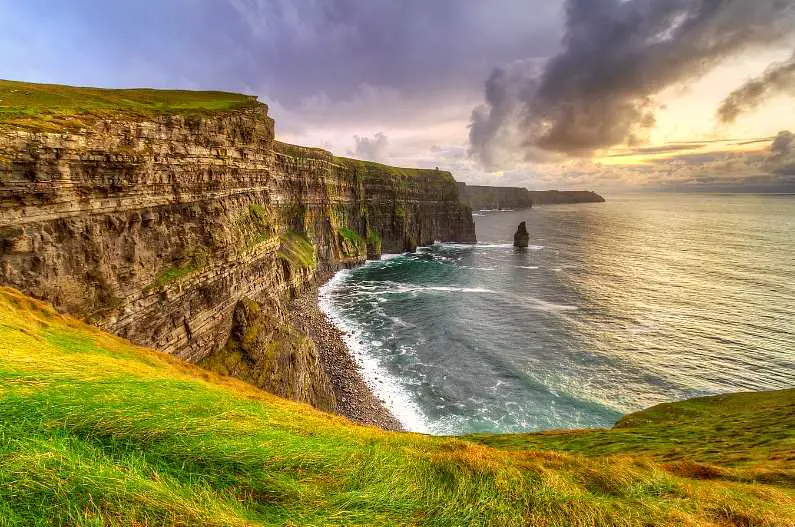
3) The name “Moher” is Gaelic for “ruined fort”
The name “Moher” (pronounced “Mow-huh”) is believed to come from an old fort called “Mothar” or “Mhothair,” which once stood near the cliffs.
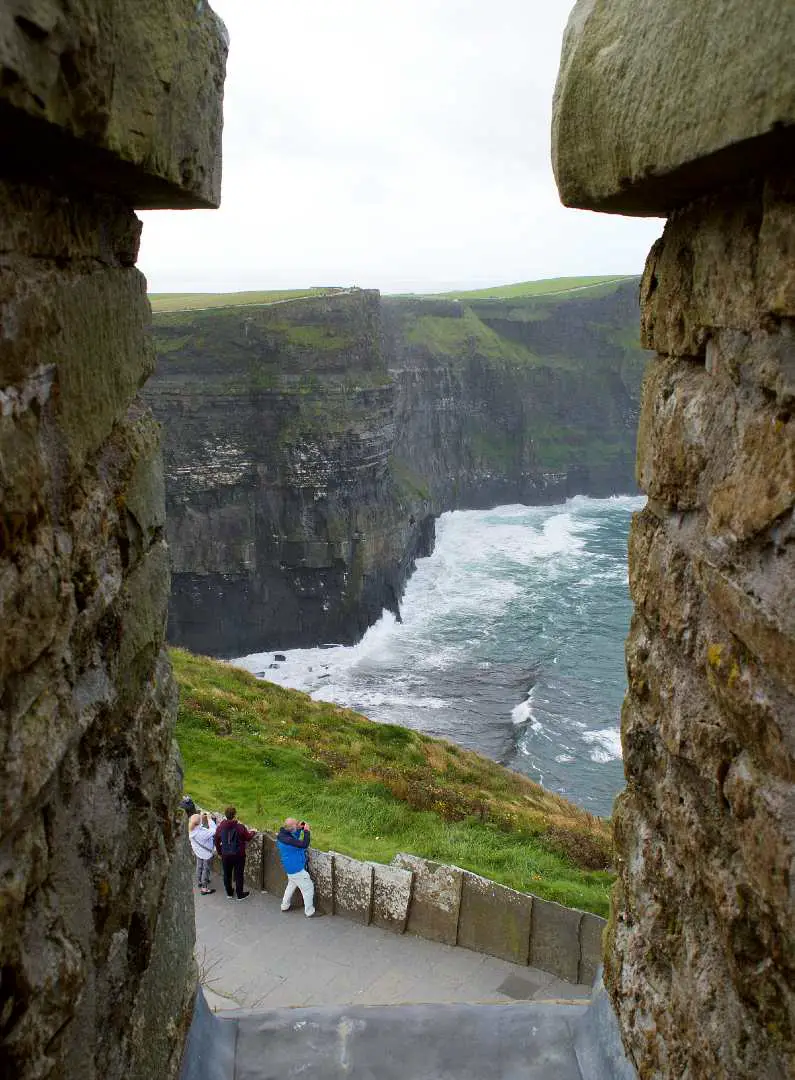
4) The Cliffs of Moher attract over a million visitors every year!
The Cliffs of Moher are one of Ireland’s most popular landmarks due to their combination of natural beauty, geological significance, cultural importance and tourist-friendly trails.
When you see them, you’ll know instantly what I mean!!
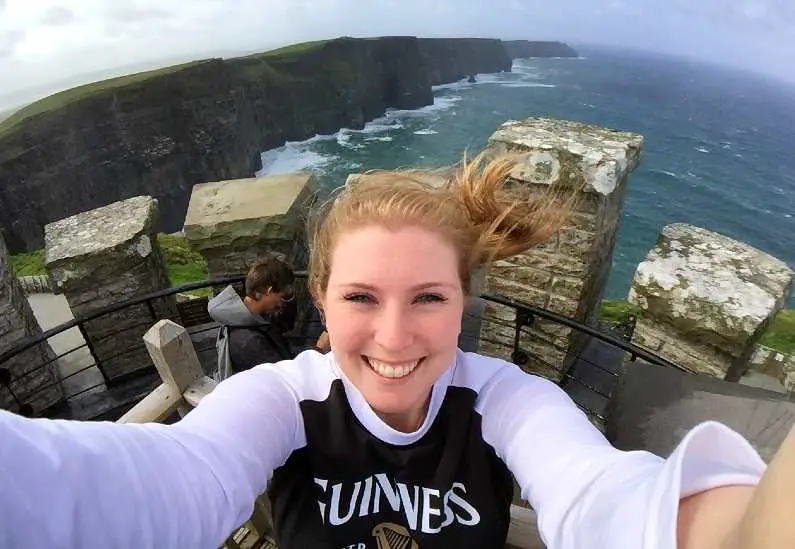
5) The iconic Cliffs of Moher Tower was built for visitors during the victorian tourist boom
O’Brien’s Tower was built in 1835 by a local landowner by the name of Sir Cornelius O’Brien. He built the observation tower purely to cater for the numerous tourists who were already visiting the cliffs during the Victorian tourist boom.
The tower has since become an iconic feature at the cliffs due to its spectacular viewpoint and reference marker for hiking trails.
Book your tickets to see the Cliffs of Moher from Dublin.
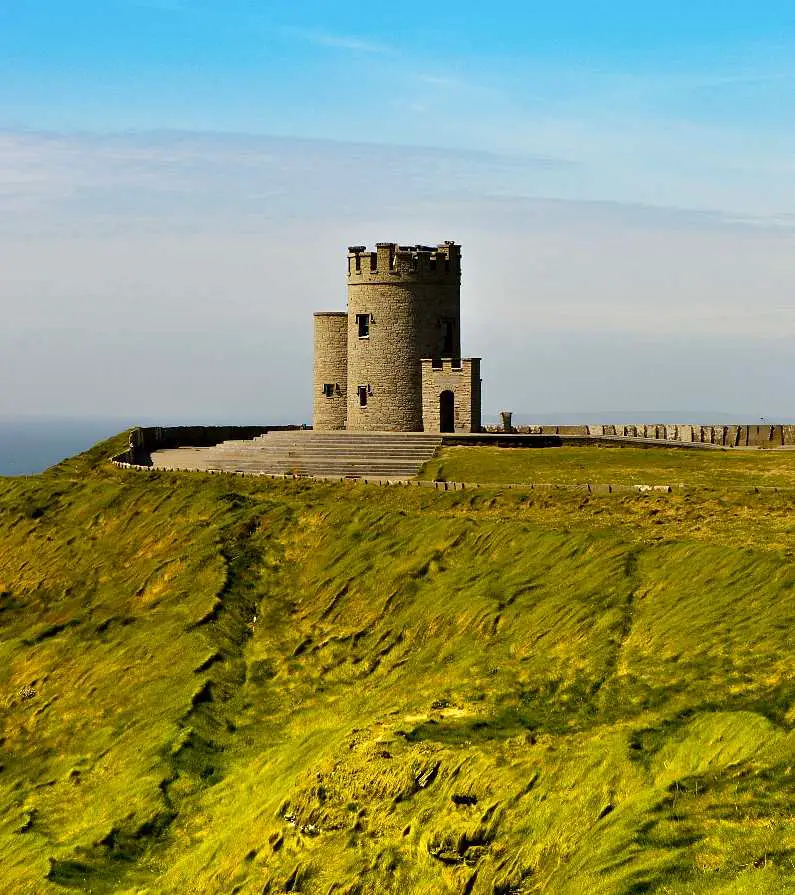
6) The Cliffs of Moher are 702 feet at their highest point
The cliffs vary in height along their nine mile stretch but the highest point is 702 feet above sea level.
Visitors to the Cliffs of Moher can experience different perspectives and elevations as they stop at various points along the cliffs. Which is what makes them so much fun to explore!
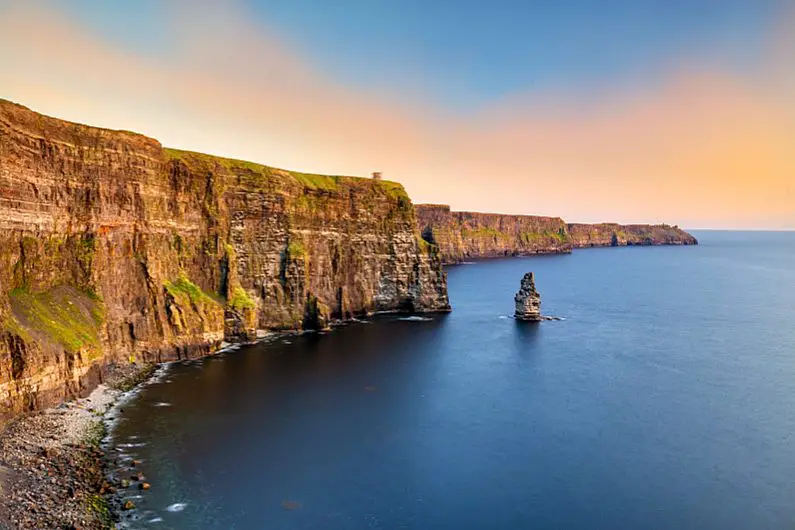
7) On a clear day, you can see the Aran Islands in Galway Bay from the Cliffs of Moher
On a clear day, the visibility from the Cliffs of Moher can extend to the Aran Islands, which are located in Galway Bay. The Aran Islands consist of three main islands: Inishmore (the largest), Inishmaan, and Inisheer.
The islands are known for their natural beauty, cultural richness and historical sites – so make sure to bookmark them for a visit another day!
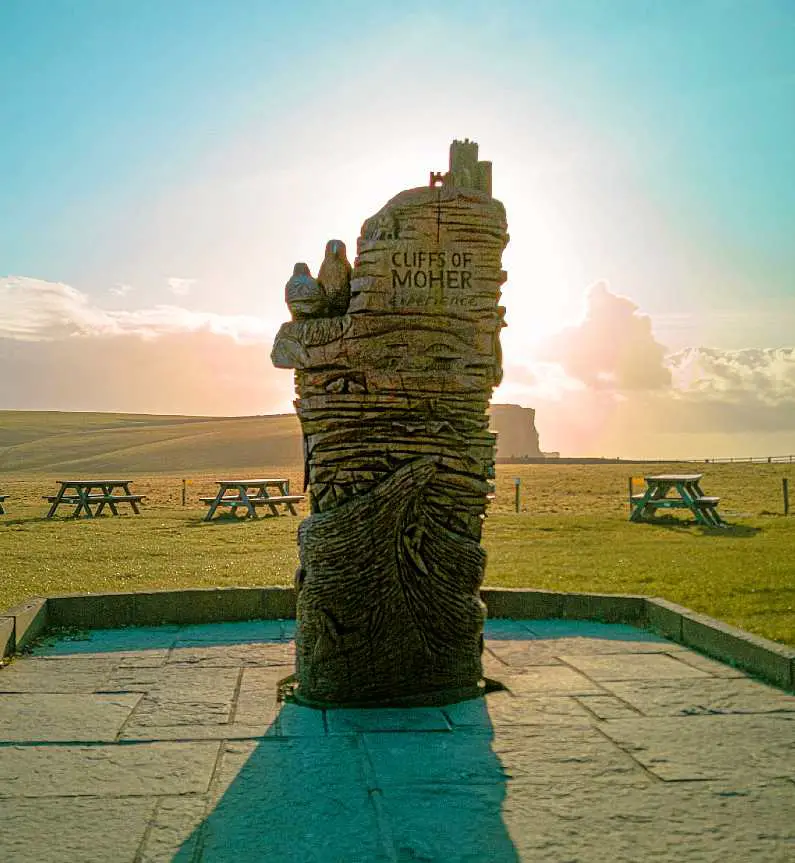
8) The Cliffs are home to a diverse range of seabirds
The Cliffs of Moher are not only a breathtaking natural wonder but also serve as an important habitat for a diverse range of seabirds, including:
- Puffins – an adorable black seabird with distinctive orange, blue and yellow beaks.
- Razorbills – super cute black and white seabirds that nest in colonies on the cliffs that are easily recognisable thanks to their sharp, pointed bill.
- Kittiwakes – sea gull-like birds with white plumage and grey wings. They often nest on the cliffs in large colonies.
The Cliffs of Moher provide these birds with the perfect environment for nesting and breeding, whilst the colonies contribute to the ecological significance of the cliffs.
The birds also add to the wonderful biodiversity and beauty of the area too!
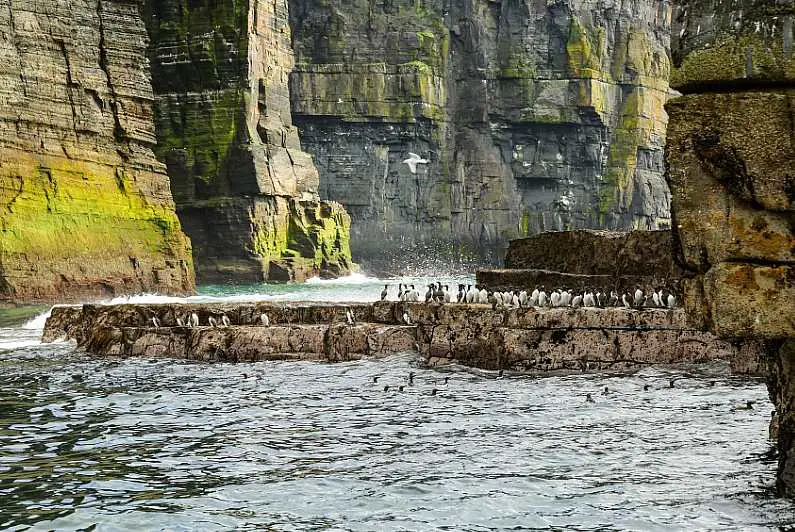
9) The Cliffs of Moher are a UNESCO site
The Cliffs of Moher became a part of the Burren and Cliffs of Moher UNESCO Global Geopark in 2011 thanks to their geological and cultural significance.
The Burren is known for its unique karst landscape, diverse flora and archaeological sites. Whilst the Cliffs of Moher are a prominent natural landmark along the Atlantic coast.
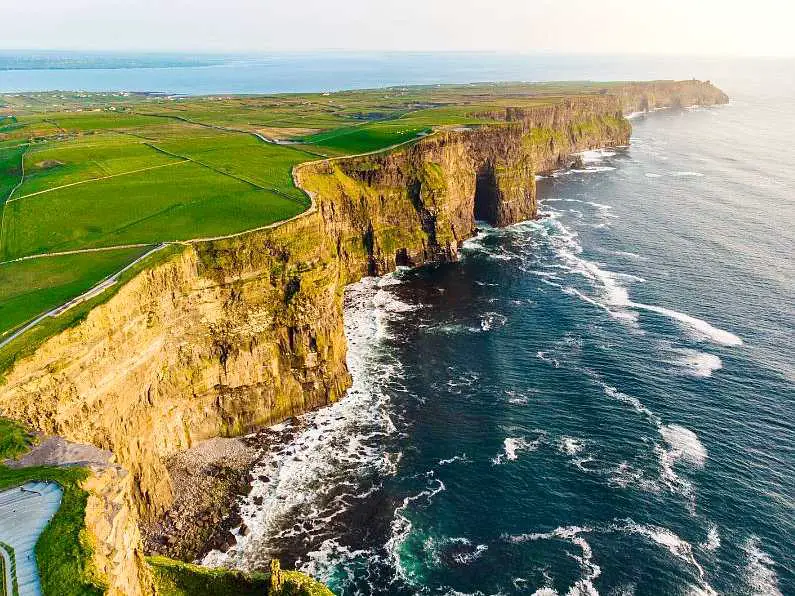
10) The Cliffs of Moher are a popular filming location
The Cliffs of Moher have featured in many films and TV shows, including: “The Princess Bride”, “Leap Year” and “Into the West”.
Most famously the cliffs featured in the film, “Harry Potter and the Half Blood Prince”. Harry and Dumbledore teleport onto the side of a sea cliffs and enter a cave to find a horcrux! Remember it now? 😉
Learn more fun facts like this on the Dublin to Cliffs of Moher Day Tour Trip. You’ll get to know more about Ireland’s rich heritage on a scenic drive to the Galway coast, stopping en route for photo opportunities in Kinvara fishing village and Bunratty Castle!
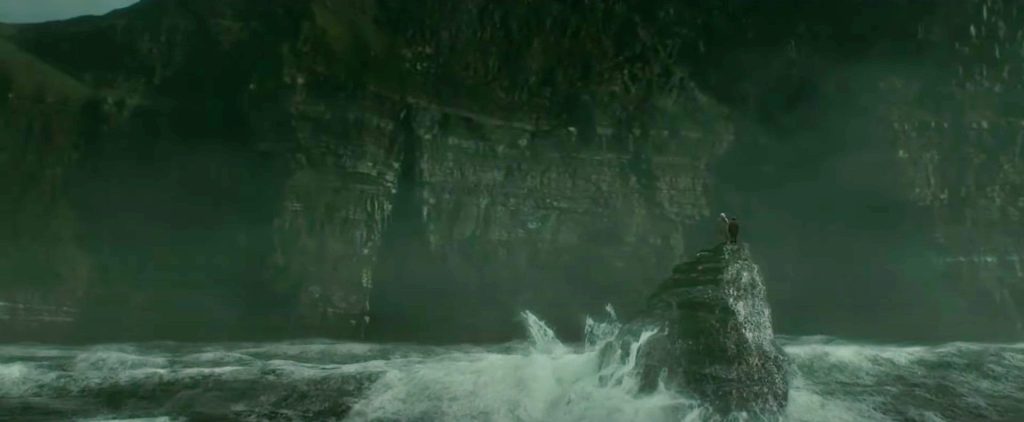
OTHER IRISH POSTS YOU MAY LIKE…
- Complete Guide to the Guinness Storehouse Dublin (plus, top tips!)
- Top 10 things to do in Belfast (as recommended by a local!)
- Find the most iconic Game of Thrones locations in Northern Ireland!
- How to get from Belfast to the Giant’s Causeway (by car, train, bus and tour!)
- How to get from Dublin to Cliffs of Moher (by car, train, bus and tour)
What facts about the Cliffs of Moher do you like best? 😄

Quick FYI guys – this ‘Facts about the Cliffs of Moher’ post contains affiliate links to various tours. I will receive a small commission for purchases made through these links at no extra cost to you.

